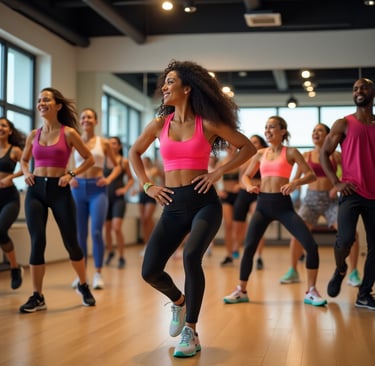Moving to Heal: How Dance, Martial Arts, and Exercise Boost Emotional Health
10/13/20252 min read


Embracing Movement for Emotional Wellness
We often talk about mental health as if it's something separate from our physical selves. But what if we told you that moving your body—through dance, martial arts, or exercise—could significantly contribute to your emotional well-being? That's right! Engaging in these activities can help alleviate symptoms of anxiety, stress, and panic, promoting a healthier, happier you.
The Therapeutic Benefits of Dance
Dance is not just a fun way to express yourself; it can also work wonders for your emotional health. When you dance, endorphins are released, which are natural mood lifters. These feel-good hormones can reduce feelings of anxiety and tension, creating a sense of calm. Moreover, dance encourages social interaction, which can help diminish feelings of loneliness and isolation—common contributors to poor emotional health.
Martial Arts: A Mind-Body Connection
Martial arts also offer an impressive range of emotional health benefits. The practice emphasizes discipline, focus, and mental resilience. Activities like karate, judo, or tai chi teach you to center yourself, and through structured movements, you can channel your anxiety into something positive. As you learn to control your body, you simultaneously learn to control your mind, giving you the tools to better manage stress and panic attacks.
General Exercise: A Holistic Approach
Then, there's good old-fashioned exercise. Regular physical activity can lead to a plethora of positive changes in your overall emotional health. Whether it’s jogging, cycling, or hitting the gym, moving your body promotes better sleep, increases energy levels, and helps combat the fatigue that often accompanies anxiety and depression. Plus, the routine of exercising provides a structured way to face the day, making it easier to manage life’s stresses. Even just a brisk 30-minute walk can make a world of difference in how you feel.
So, does this mean you need a dance recital or a black belt to benefit? Absolutely not! The key takeaway is to find a movement practice that resonates with you. Whether you prefer to sway to your favorite tunes, practice kickboxing in your living room, or simply take a walk in the park, any movement counts!
As you incorporate more movement into your daily routine, you'll likely notice the positive impact it has on your emotional health. More resilience in the face of stress, relief from anxiety, and a general uplift in your mood can all be yours, one step at a time.
Pulling it Together
For Anxiety: Movement calms the nervous system, slows breathing, and interrupts thought loops.
For Stress: It burns excess cortisol, creating a physical reset.
For Panic: Training the body to tolerate intensity (through dance highs, martial sparring, or cardio peaks) helps panic feel less like danger and more like energy the body knows how to handle.
In short: movement gives the body back its role in healing emotions. Instead of trying to “think” your way out of stress or anxiety, you let the body show the mind what balance feels like. So why not start today? Get moving and feel the difference! Your mind and body will thank you.
Connect
Empowering healing through mindful hypnotherapy sessions
© 2025. All rights reserved.
